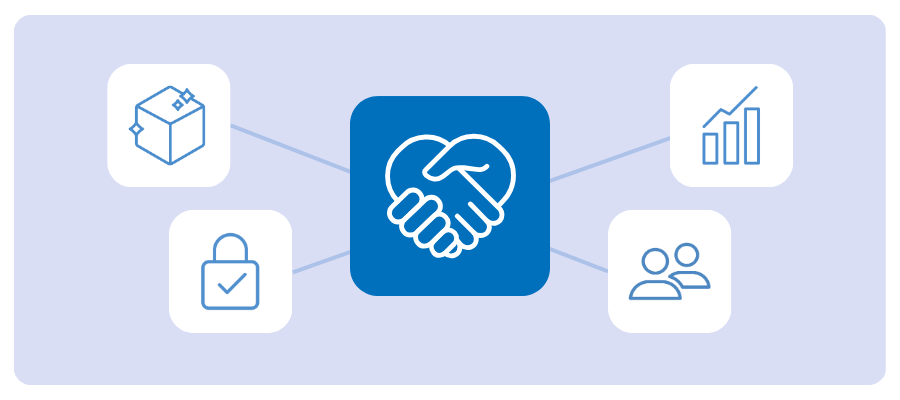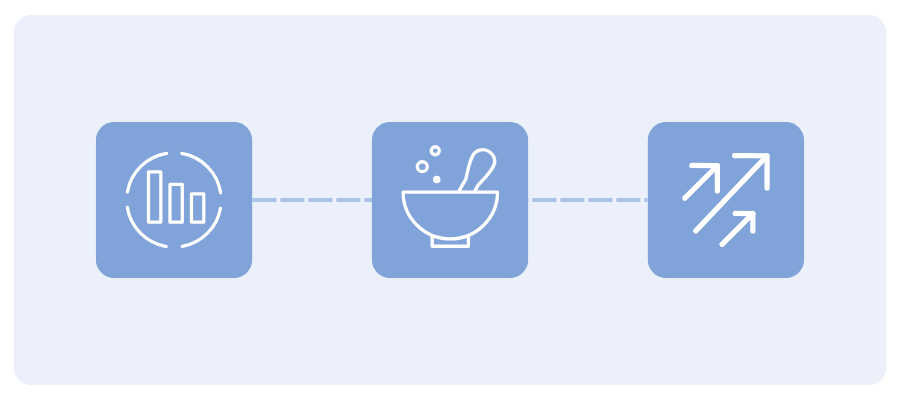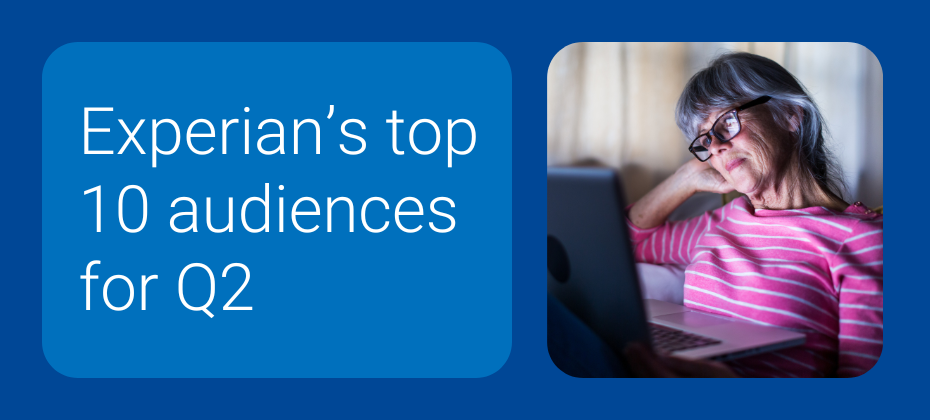At A Glance
Advertisers are embracing CTV, data collaboration, and AI to deliver more personalized, efficient, and impactful campaigns, transforming living rooms into interactive hubs, utilizing creator-led programming, and streamlining workflows. At Cannes Lions 2025, industry leaders highlighted how privacy-first data practices, supply path optimization, and AI-powered tools are reshaping the advertising ecosystem - areas where Experian plays a key role in enabling trusted, measurable, and innovative outcomes.As artificial intelligence (AI), connected TV (CTV), and data collaboration continue to advance, advertisers are discovering new ways to meet audiences where they are; on their terms and in their spaces. These innovations are creating opportunities to deliver more personalized, impactful campaigns that were unimaginable just a few years ago. At Cannes Lions 2025, we sat down with industry leaders from Butler Till, Comcast Advertising, Index Exchange, IQVIA Digital, Optable, PMG, Samsung Ads, and Sports Innovation Lab.
From reimagining the living room experience to using AI in practice for better outcomes, here’s what we learned about the trends driving advertising forward.
1. CTV turns living rooms into active spaces

CTV has turned the living room into a hub of interaction, discovery, and commerce. Younger audiences are using their TVs like mobile devices; streaming, learning, and even controlling their homes. This shift is creating new opportunities for advertisers to deliver relevant, personalized experiences where audiences are already engaged. With premium content and interactive tools, the living room is no longer just a passive space, it’s where attention meets action, and where brands can connect with audiences in meaningful ways.
How Experian helps
With Experian, advertisers can connect first-party data with CTV IDs, ensuring accurate and measurable targeting while maintaining a privacy-first approach. That means brands reach viewers with messages that feel personal, without losing trust.
“We surveyed 1,000 smart TV owners and found that younger audiences are using their TVs like mobile devices. Two-thirds use them for social media, 40% for self-improvement like Coursera or TED Talks, and 25% for interactivity; controlling appliances or home temperatures. Interactivity with connected TVs is skyrocketing.”
Samsung Ads Justin Evans
2. Creators build stronger connections with audiences
Creators are no longer limited to social media; they are now a driving force in CTV. Creator led programming is capturing attention and driving post view actions, offering advertisers a unique way to connect with passionate, engaged audiences. By thinking of creators as “micro networks” with built in communities, advertisers can meet fans where they already gather and deliver authentic, impactful messages that resonate.

How Experian helps
Experian helps advertisers tap into the creator economy by identifying topical audiences that align with influencer niches—like food, travel, gaming and entertainment—and activating them across the open web. Through Audigent’s integration with DV360, brands can pair Experian’s expansive audience targeting capabilities with Audigent’s Curated Deals to reach engaged viewers in creator-led environments. This approach ensures ads appear where audiences are most receptive, enhancing relevance and performance.
“The creator economy is moving into TV. It’s incredible to see social influencers, once dominant on platforms, now creating high quality content for streaming, networks, and more.”
Butler/TillGina Whelehan
3. Data collaboration that drives better results

Advertisers rely on data to reach the right audiences, but privacy concerns are reshaping how it’s collected, shared, and used. Data collaboration enables brands to combine multiple data sets (like first-party data and syndicated audiences) to improve planning, activation, and measurement. While privacy remains a priority, the focus is on creating actionable insights that drive better results and build trust with consumers. By focusing on consented, privacy safe identity solutions, advertisers can achieve better outcomes while respecting consumer privacy; a win-win for brands and audiences alike.
How Experian helps
Experian’s privacy-first approach ensures that all data activation occurs with compliance and consent. By maintaining high match rates, offering flexible collaboration options (including clean rooms, first-party data onboarding, and syndicated audiences) and adhering to transparent methodologies, Experian facilitates seamless collaboration between brands, publishers, and platforms. This helps build trust and strengthen long-term connections with audiences.
“The area we’re most excited about is identity resolution on the publisher side. Publishers can reinsert signal and create better results for advertisers. This wasn’t always well-articulated, but today we have case studies proving publishers can help improve outcomes.”
OptableVlad Stesin
4. Optimizing supply paths for better outcomes
Supply path optimization (SPO) helps advertisers improve campaign efficiency by increasing viewability and reducing waste. Supply-side decisioning builds on this by identifying the audiences advertisers want to reach, the content those audiences consume, and the publishers with the most relevant inventory. Together, these strategies create a more intelligent and efficient ecosystem, ensuring ads are delivered in the right context, to the right people, on the right platforms.

How Experian helps
Experian’s data solutions, including both Experian’s and Audigent’s contextual and identity capabilities, are available across sell-side (SSPs) and buy-side (DSPs) platforms, enabling smarter decision-making throughout the media supply chain. Audigent’s direct integrations with publishers provide an unfiltered view into available inventory, offering deeper insights that inform campaign optimization. These insights can be activated in real time and transacted within advertisers’ existing buying platforms.
By powering real-time intelligence across the ecosystem, from advertisers to DSPs, SSPs, and publishers, Experian and Audigent help drive better outcomes, more efficient media spend, and greater value for all participants.
“Sell-side decisioning activates the intelligence of the exchange, along with partners like Experian, to optimize auctions in real time. This helps pre-decision buys that flow to the DSPs, making the buying process smarter, more efficient, and ultimately driving better value for marketers and publishers.”
Index ExchangeMike McNeeley
5. AI that streamlines agency workflows

AI is a practical tool that agencies are using to streamline workflows and deliver better results. From planning and pacing to creative iteration, AI is helping teams move faster and smarter. In fact, 67% of global marketing and communications professionals now use AI for content creation frequently or all the time, underscoring its role in modern workflows. The key is to think of AI as a navigator, not a replacement. It handles repetitive tasks, freeing up teams to focus on strategy and creativity, while enabling faster tests, fewer dead ends, and better client clarity.
How Experian helps
Experian uses AI and machine learning to deliver highly personalized marketing solutions. In our Digital Graph, advanced clustering algorithms analyze household and individual device connections, improving targeting and measurement accuracy. We also use AI powered audience recommendations to create tailored audience solutions for clients. Our contextual data models, powered by Audigent’s contextual engine, further improve this process by analyzing bidstream traffic in real time, ensuring audiences are aligned with the most relevant inventory.
“We’ve extended our platform with Marketplace, which lets us integrate third-party partners, new tech, and data seamlessly into activation. Clients are asking for this level of innovation, especially with the speed at which AI is evolving and transforming what’s possible in marketing.”
PMGSam Bloom
Connecting the dots: Data, creativity, and outcomes
The common thread across these insights is how we connect with audiences, collaborate on data, and create meaningful outcomes. By reimagining the living room experience and utilizing AI and creator-led programming, brands are embracing innovation.

How Experian helps
Experian helps you build privacy-first identity foundations, collaborate seamlessly, optimize supply paths, streamline with AI, and connect through creators.
Let’s start a conversation
FAQs
CTV brings premium, interactive streaming to the largest screen at home, allowing brands to reach engaged viewers with measurable, personalized experiences.
It’s the consented, secure use of first-party and partner data (often via clean rooms) to improve planning, activation, and measurement without exposing raw consumer data.
SPO streamlines the path from advertiser to publisher, reducing waste and improving quality. Sell-side decisioning adds real-time intelligence to the exchange, delivering the proper context and audience more efficiently.
Creator-led programming functions like “micro networks” with built-in communities, helping brands show up where fans are already engaged and ready to act.
Viewers use TVs like mobile devices, discovering content, learning, shopping, and interacting; advertisers can meet their intent and drive post-view actions.
Latest posts

At Experian, we understand the critical role that audience targeting plays in the success of marketing campaigns. That's why we're excited to share this curated list, aimed at helping agencies and media buyers plan their campaigns and effectively reach their audiences with precision and confidence. What separates Experian's syndicated audiences Experian’s 2,400+ syndicated audiences are available directly on over 30 leading television, social, programmatic advertising platforms, and directly within Audigent for activation within private marketplaces (PMPs). Reach consumers based on who they are, where they live, and their household makeup. Experian ranked #1 in accuracy by Truthset for key demographic attributes. Access to unique audiences through Experian’s Partner Audiences available on Experian’s data marketplace, within Audigent for activation in PMPs and directly on platforms like DirectTV, Dish, Magnite, OpenAP, and The Trade Desk. Here's a look at the Experian audiences that were the most popular in Q2 2023. Which ones will you add to your Q2 campaign planning? Our top 10 audiences for Q2 Fitness enthusiast Lifestyle and Interests (Affinity) > Health & Fitness > Fitness Enthusiast In-store high spender on baby products Retail Shoppers: Purchase Based > Shopping Behavior > Baby Products: In Store High Spenders Has a bachelor’s degree Demographics > Education > Bachelor Degree In-market for an SUV and CUV Autos, Cars and Trucks > In Market-Body Styles > SUV and CUV In-market for a mid-size truck Autos, Cars and Trucks > In Market-Body Styles > Mid-Size Truck Homeowner Demographics > Homeowners/Renters > Homeowner In-market for a small, mid-size SUV Autos, Cars and Trucks > In Market-Body Styles > Small Mid-Size SUV In-market for a full-size truck Autos, Cars and Trucks > In Market-Body Styles > Full-Size Trucks In-market for a full-size SUV Autos, Cars and Trucks > In Market-Body Styles > Full-Size SUVs Household income level Demographics > Household Income (HHI) > $75,000+ Our top 5 audiences by vertical Which audience segments were the most popular by advertiser vertical? Advanced TV Household income level Demographics > Household Income (HHI) > $75,000-$99,999 Interested in dogs Lifestyle and Interests (Affinity) > Pets > Dogs (FLA / Fair Lending Friendly)1 Homeowner Demographics > Homeowner/Renter > Homeowner Household income level Demographics > Household Income (HHI) > $100,000-$124,999 Interested in arts and entertainment Lifestyle and Interests (Affinity) > Art and Entertainment > Visual Art and Design (FLA / Fair Lending Friendly) Agency Dog owner Lifestyle And Interests (Affinity) > Pets > Dog Owners Cat owner Lifestyle And Interests (Affinity) > Pets > Cat Owners Active investor Lifestyle And Interests (Affinity) > Investors > Active Investor Mutual fund investor Lifestyle And Interests (Affinity) > Investors > Mutual Fund Investor In-market for a full-size SUV Autos, Cars and Trucks > In Market-Body Styles > Full-Size SUVs Auto In-market for a new car Autos, Cars and Trucks > In Market-New/Used > New Car In-market for a used car Autos, Cars and Trucks > In Market-New/Used > Buyer Used In-market for a Honda Autos, Cars And Trucks > In Market-Make And Models > Honda In-market for an auto loan Financial FLA Friendly > In Market Auto Loan In-market for an auto lease Financial FLA Friendly > In Market Auto Lease Did you know? Consumers looking to buy a new vehicle prefer streaming TV, digital newspapers, and email for communication2. By merging our TrueTouchTM engagement channel audiences with our Auto in-market audiences, you can effectively target these consumers through their preferred channels. TrueTouch facilitates personalized advertising campaigns by predicting consumer preferences, ensuring messaging styles align with the right channels and calls to action. By understanding what types of media people prefer, you can match the best way to talk to them with what to offer, using the right channels for personalized ads. No consumer is the same – and you need to engage with them on their terms to successfully market to them. Financial Active in the military Lifestyle And Interests (Affinity) > Occupation > Military – Active In-market for a credit union loan Financial FLA Friendly > In Market Credit Union Loan 40-49 years old Demographics > Ages > 40-49 30-39 years old Demographics > Ages > 30-39 Small business owner Consumer Behaviors > Occupation: Small Business Owners Health 25-29 years old Demographics > Ages > 25-29 30-34 years old Demographics > Ages > 30-34 Weight conscious Lifestyle and Interests (Affinity) > Health & Fitness > Weight Conscious Moms interested in fitness Lifestyle and Interests (Affinity) > Moms, Parents, Families > Fitness Mothers High spenders at vitamin/supplement stores Retail Shoppers: Purchase Based > Health and Fitness > Vitamins/Supplements: Vitamins/Supplements Retail & CPG Dog owners Lifestyle And Interests (Affinity) > Pets > Dog Owners Cat owners Lifestyle And Interests (Affinity) > Pets > Cat Owners Fitness enthusiast Lifestyle and Interests (Affinity) > Health & Fitness > Fitness Enthusiast Interested in healthy living Lifestyle and Interests (Affinity) > Health & Fitness > Healthy Living High spenders at vitamin/supplement stores Retail Shoppers: Purchase Based > Health and Fitness > Vitamins/Supplements: Vitamins/Supplements Activate the right audiences with Experian When you choose Experian’s syndicated audiences, you gain access to over 2,400 audiences that span across 15 verticals and categories. These audiences are directly available for activation on over 30 platforms and can be sent to over 200 media platforms. Experian is ranked #1 for data accuracy (as validated by Truthset) and Experian Marketing Data is the foundation for successful targeting, enrichment, and activation. For a full list of Experian's syndicated audiences and activation destinations, download our syndicated audiences guide. Need a custom audience? We can help you build and activate an Experian audience on the platform of your choice. Connect with our audience team Check out other seasonal audiences you can activate today. Contact us Footnotes Fair Lending Act Friendly audiences: “Fair Lending Friendly” indicates data fields that Experian has made available without use of certain demographic attributes that may increase the likelihood of discriminatory practices prohibited by the Fair Housing Act (“FHA”) and Equal Credit Opportunity Act (“ECOA”). These excluded attributes include, but may not be limited to, race, color, religion, national origin, sex, marital status, age, disability, handicap, family status, ancestry, sexual orientation, unfavorable military discharge, and gender. Experian’s provision of Fair Lending Friendly indicators does not constitute legal advice or otherwise assure your compliance with the FHA, ECOA, or any other applicable laws. Clients should seek legal advice with respect to your use of data in connection with lending decisions or application and compliance with applicable laws. Experian looked at our Auto and TrueTouch audience data to understand media preference trends over the past year. Latest posts

With the impending deprecation of third-party cookies, marketers find themselves at the crossroads of innovation and adaptation. As we bid farewell to this identifier, the emphasis shifts to forging deeper connections, understanding customer needs, and navigating the marketing landscape with data-driven precision. At Experian, we stand as your trusted partner, committed to guiding you through this transition. In this blog post, we'll explore: How third-party cookie deprecation is impacting digital advertising Six alternatives to third-party cookies and where they fall short How Experian can help you navigate a cookieless world Four ways third-party cookie deprecation is impacting digital advertising Third-party cookie deprecation is causing significant challenges within the AdTech industry, manifesting in four key areas: Reach: Advertisers and demand-side platforms (DSPs) will face difficulties in reaching their target customers due to the absence of third-party cookies. Understanding audiences: Advertisers will find it challenging to understand the demographics and behaviors of their customer base without third-party cookies. Similarly, publishers are struggling to identify their audiences accurately, resulting in less addressable and appealing inventory. Measurement: Measurement providers may encounter obstacles in accurately assessing the effectiveness of advertising campaigns. Additionally, DSPs are finding it hard to measure the impact of their ads without the assistance of third-party cookies. Matching: Data providers may experience challenges in matching users with the appropriate audience segments, leading to difficulties in delivering targeted advertising. Six alternatives to third-party cookies As the deadline approaches for Google's removal of third-party cookies from Chrome by the end of 2024, marketers are scrambling to discover alternative methods for delivering effective advertising. Fortunately, various alternatives are emerging. However, the abundance of options can create confusion rather than clarity. Which alternatives are worth considering? Here are six compelling alternatives to third-party cookies: 1. First-party data Acquiring consented first-party data directly from users is becoming increasingly vital as it can lay the groundwork for more precise targeting. 2. Universal IDs Alternative identifiers like The Trade Desk's UID2 and ID5’s Universal ID are becoming increasingly important, offering the ability to maintain a comprehensive consumer view across channels and platforms, leading to enhanced personalization and addressability across various channels, even in cookieless environments. 3. Identity graphs As browser-based IDs shift and digital signals decline, the need for an identity graph grows, with companies adopting a "graph-of-graph" strategy by combining their own robust first-party data with licensed identity graphs, as highlighted in recent announcements by industry giants such as Disney, VideoAmp, and Magnite. 4. Contextual targeting Contextual targeting aligns publisher content with relevant ads, ensuring ad delivery based on content rather than individual identifiers. This privacy-respecting approach is less dependent on third-party cookies, providing effective audience activation. 5. Data collaboration In a cookieless world, it becomes more difficult for companies to "communicate" with one another. We expect to see more pick up of data collaboration in the market, using addressable IDs and identity resolution to power connectivity between partners and their data sets. 6. Google Privacy Sandbox The primary goal of Google’s Privacy Sandbox is to continue to deliver valuable consumer information that yields relevant marketing and media strategies, while protecting a user’s privacy. How these alternatives to cookies fall short While it's promising to see numerous alternatives to cookies emerging, it's essential to recognize that each alternative has its limitations and is not a perfect one-to-one replacement for third-party cookies. Let’s review the shortcomings of these alternatives, and then we’ll walk through how Experian can help you navigate these alternatives to cookies. 1. First-party data First-party data, which is data directly collected from your users with their consent, is highly valuable. However, you will likely face limitations in terms of the number of consumers in your database, the identifiers linking them, and the insights into their demographics and behaviors. To overcome these limitations, it's essential to expand both the quantity and quality of your first-party data. 2. Universal IDs Universal identifiers are valuable for tracking users across different devices and websites. However, no single universal identifier has enough reach to fully replace third-party cookies. Universal IDs are most effective in terms of scaling, when they are combined with other universal identifiers or alternative addressable identifiers. 3. Identity graph Identity graphs excel at connecting digital audiences. However, establishing an identity graph from scratch is a significant accomplishment, demanding expertise, financial resources, and more. 4. Contextual targeting Contextual targeting and advertising aim to place your ads next to relevant content. However, there's a risk that your ads might appear alongside misaligned content, reaching audiences who are uninterested or unintended. 5. Data collaboration Data collaboration is beneficial for enhancing your consumer data and informing your strategies. However, it can introduce potential data security risks, if not done in the right framework, and may lead to subpar matching results due to issues like data hygiene or discrepancies in identifiers. 6. Google Privacy Sandbox Google’s Privacy Sandbox aims to balance effective advertising with consumer privacy and data security. However, it lacks transparency and has yet to prove its effectiveness, raising concerns about whether it meets industry standards. How Experian can help you navigate a cookieless world As an industry innovator and leader in data and identity, we've developed solutions to address the challenges posed by the shift away from third-party cookies. Our products are designed to adapt to these changes and ensure your success. We've anticipated industry shifts and proactively prepared our offerings to support you through this transition. Below we outline how our products are ready to support you through the transition away from third-party cookies. Graph The Experian Graph facilitates connectivity without relying on cookies. Our Graph helps ensure connectivity by supporting a variety of addressable identifiers, not limited to but including universal IDs, like Unified ID 2.0 (UID2) and ID5's universal ID. Whether you have first-party data or not, our Graph can be used to expand the reach of your first-party data or provide you with access to the full scope of our Graph's 126 million households and 250 million individuals. Activity Feed Supported by our Graph, Activity Feed can help you deliver digital connectivity and resolution in a cookieless environment. Activity Feed can resolve disparate activity to a single, consumer profile. It can expand the quantity of addressable identifiers associated with your first-party consumers. Additionally, Activity Feed, by joining disparate activity and identifiers, provides clearer insights, more addressable targets, and more holistic measurement. Our Marketing Attributes and Audiences In a cookieless environment, our Marketing Attributes and Audiences provide valuable information and insights about who your consumers are, like their demographics, shopping patterns, and more, to facilitate more informed decision-making. You can use our Marketing Attributes and Audiences to enrich your first-party data, giving you crucial insights into your customers so you can make informed, strategic decisions. They can be matched to universal identifiers, expanding their utility. Additionally, our Marketing Attributes and Audiences are sourced from non-cookie dependent offline and digital sources, ensuring they are unimpacted by third-party cookie deprecation. Collaboration While third-party cookies have primarily served to connect data in the industry, many companies are turning to data collaboration in lieu of having third-party cookies. In doing so, they can connect data with key partners, which they can use to make better media decisions. Experian Collaboration helps make data collaborations better, powering higher match rates by using the various identifiers supported in our offline and digital graphs. Through our current support of collaboration in three environments, within Experian, through crosswalks, and in clean rooms, such as AWS, InfoSum, and Snowflake, we ensure that you only share the data you intend to share, while the sensitive information remains secure. This way, your partner and you can focus on how to use the data to benefit you and not on anything else. Get started with alternatives to third-party cookies today While many view the deprecation of third-party cookies as disruptive, we see it as an opportunity for the industry to embrace a new era of advertising while prioritizing consumer privacy. Achieving this balance is crucial, and Experian's solutions are here to help you navigate it effectively. As the AdTech industry gravitates toward a few tactics to effectively advertise in the cookieless future, Experian is here to understand your core needs and recommend products that will help. In a rapidly evolving marketing landscape, Experian stands as your trusted partner, offering expertise in data-driven and identity solutions. Connect with our team to seamlessly transition into these alternatives to third-party cookies, ensuring your marketing strategies remain effective, privacy-compliant, and focused on meaningful connections. Get started today Latest posts

In the ever-evolving and soon-to-be cookieless advertising world, brands and agencies need help finding and maintaining access to accurate and comprehensive marketing data that enables them to reach the audience segments that matter most. Flashtalking by Mediaocean and Experian have a collaboration in place to do just that. Through this partnership, Experian’s more than 2,400 syndicated audiences are available for activation within the Flashtalking platform and its Social Ads Manager. “There are a lot of audience segments and data disappearing within the advertising industry right now because of the deprecation of third-party cookies, but Experian’s syndicated audiences are built for this new privacy-first world. Through this partnership, Flashtalking's clients gain access to some of the industry's most actionable on-the-shelf and custom audience capabilities for activation and targeting across the publishers and social platforms that matter most. It’s as easy as identifying the segments that matter to your brand and activating them everywhere they exist with a few simple clicks.” – Ben Kartzman, COO, Flashtalking by Mediaocean This partnership unites the power of Flashtalking's best-in-class independent omnichannel advertising platform with Experian’s comprehensive audience intelligence, which spans 126 million households and 250 million consumers. “For the same reason that brands are investing more deeply in first-party data in the wake of third-party cookie deprecation, having access to the right audience segments has never been more important. Mediaocean offers access to the only independent ad server that’s powering truly omnichannel, personalized experiences, and we’re thrilled to be amplifying their ability to do that through Experian’s expansive audience segments.” – Colleen Dawe, Director, Sell-Side Sales, Experian The Flashtalking Social Ads Manager has long-standing relationships and technical integrations with all major platforms, including Facebook, Google Demand Gen, Instagram, LinkedIn, Pinterest, Snap, TikTok, and a forthcoming integration with Reddit. Experian data can be deployed through custom and syndicated segments within these platforms, providing clients with both reach and precision. The power of the Experian – Flashtalking collaboration Benefits to marketing organizations that tap Experian data and audience segments via the Flashtalking platform include the following: A unified customer view: Marketers can use Experian's comprehensive data within Flashtalking to create a unified view of the customer across multiple channels. This helps craft cohesive marketing strategies that deliver consistent messages, enhancing customer experiences and brand perception. Enhanced targeting and personalization: Marketers can access Experian's detailed audience segmentation and insights within Flashtalking to target campaigns effectively. They can personalize messages at scale based on demographic, psychographic, and behavioral data to increase engagement and conversion rates across all channels. Optimized cross-channel strategies: With Flashtalking's cross-channel capabilities, marketers can integrate Experian's insights to understand how different segments interact with various channels. This enables the design of optimized cross-channel strategies that cater to the preferences and behaviors of different audiences. Data-driven decision-making: This partnership combines Experian's in-depth consumer insights with Flashtalking's analytics and reporting tools to help marketers make informed decisions. This data-driven approach can improve campaign performance, optimize media spend, and reveal untapped market opportunities. Local market activation: Marketers can also use Experian's geographic and location-based data within Flashtalking to tailor campaigns to local markets. This localized approach can enhance relevance and response rates, providing a competitive edge in regional marketing efforts. Improved media efficiency: This collaboration also enables organizations to harness the power of Experian's data within Flashtalking to improve media planning and buying. They can identify the most effective channels and timeframes for reaching specific audiences, leading to more efficient and cost-effective media investments. Why choose Experian in Flashtalking For over 50 years, we have been a trusted single-source provider of data management solutions. Our expertise in offline and digital identity has enabled us to curate data from over 200 direct and active sources, offering a comprehensive view of consumers with granularity, accuracy and scale. Using this data, we can craft our syndicated audiences to cover many verticals and specialty categories. For example, a Flashtalking client in the automotive industry can supercharge its campaign efforts. Experian has found that automotive advertisers build segmentation using four major data categories: Automotive Demographics Lifestyles and Interests Retail Shoppers: Purchase-Based Directly within the Flashtalking platform, multiple syndicated audiences from Experian in each major data category specific to automotive are available that brands and agencies can activate on-the-shelf to reach consumers with targeted messaging and retargeting. Experian and Flashtalking are future-proofing advertising Together, Flashtalking and Experian will ensure advertisers can continue to deliver personalized, relevant, and impactful messages and experiences to consumers despite ongoing shifts within the data-driven marketing landscape, including the deprecation of third-party cookies in Chrome. This partnership offers greater access to audience segments built on privacy-safe insights with expansive reach, scale, and flexibility. Connect with us to learn more about how you can access Experian’s syndicated audiences through Flashtalking by Mediaocean. Contact us today About Flashtalking by Mediaocean Flashtalking unleashes the power of creative to make media work better. As the leading independent platform for personalization and intelligence across all marketing channels, our Creative Ad Tech bridges the gap between creative and media. We provide AI and automation to connect the silos between teams and deliver more efficient production, versioning, and distribution of creative. Our solutions operate at scale across CTV, Video, Display, Social, Native, Audio, DOOH, and Retail Media channels. As part of Mediaocean, Flashtalking is tied into the industry’s core ad infrastructure for omnichannel planning, buying, and billing. Visit flashtalking.com to learn more. Latest posts